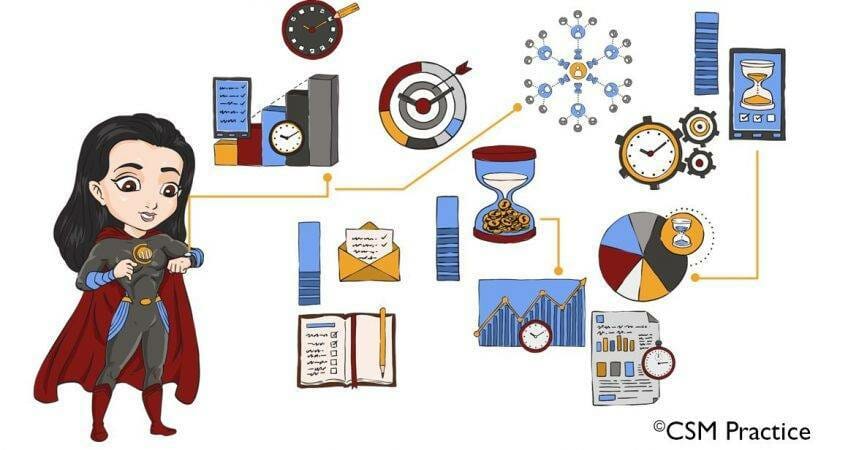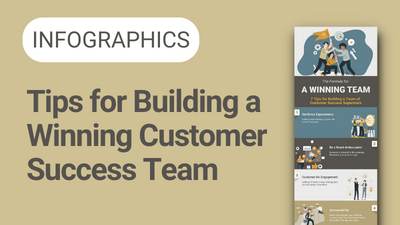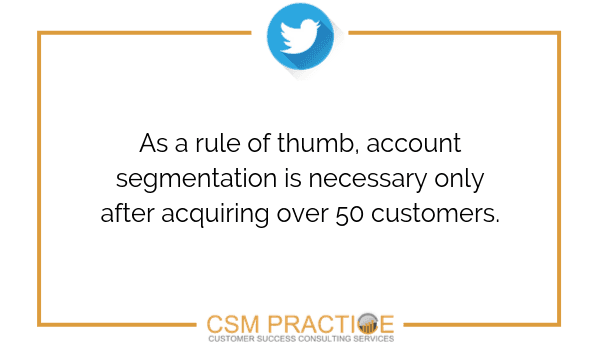Managing a growing customer base with ever-evolving desired outcomes requires being proactive and strategic. As a CSM, you can’t afford to be behind the curve on customer needs, you must proactively reach out to customers about guidance or any assistance needed.
As a proactive CSM, you should anticipate other business outcomes that your company can achieve for your client. Your CSM plan should also involve dealing with problems before they occur. Being proactive has obvious advantages, including less stress for you and your CSM team, a reduction in churn, an increase in renewals, and greater success for both your customer and your company.
The Secret to Being Proactive
Becoming proactive can be tough, and it doesn’t just happen. More often than not, it seems there is little or no time to be as proactive or strategic with your clients as you’d prefer. This might happen as a result of a large customer base, various other responsibilities, or being accustomed to being reactive.
The secret to being more proactive is nurturing your skills to be more productive. Increased productivity is vital to becoming proactive and creating time for proactive and strategic tasks.
How to Become More Productive
It heavily involves turning your one-off playbook into an efficient and repeatable success. A proactive CSM transforms routine tasks into well-defined processes that are both quick and repeatable. Becoming more productive requires leveraging playbooks to make repetitive tasks happen more efficiently.
At CSM Practice, we create playbooks that are well-defined based on best practices for our clients. We start by optimizing strategies for customer success, then we identify opportunities to use technology to ensure our clients have visibility to see what processes work. Using a customer success system can ensure that the processes are applied efficiently to make the CSM team more productive with time and more proactive with their customers.
To scale your customer success team, I recommend going through these three (3) steps:
1) Optimize your account segmentation
2) Document step-by-step customer success playbooks
3) Perform a CSM Systems and Productivity Tools assessment
Account Segmentation
Account segmentation is done to defend the revenue that you’re getting from your customers. Your customer base is divided into groups with similar needs to allow you to efficiently deliver appropriate services for each segment. The metric you employ should be personalized to your distinctive customer base and must properly defend the different risk levels, opportunities, and revenue from your clients.
Design the process with an appropriate level of engagement with the client based on the revenue and opportunity that you’re defending, not necessarily the ARR. Other criteria could include the number of licenses, geolocation, strategic value, service package, etc. You should implement processes to change a client’s segment to properly defend risks.
As a rule of thumb, account segmentation is necessary only after acquiring over 50 customers. If your installed customer base is below 50 customers, endeavor to apply a high-touch model for all your customers. Account segmentation allows you to be more productive with your time and proactive with your customers, as you can predict what each client segment will need before the clients realize it.
Defining your engagement model for each customer segment can be made more efficient with these tools:
A RACI Chart
A RACI chart is a simple matrix to delegate roles and responsibilities for every process or milestone in the customer lifecycle journey. RACI stands for: Responsible, Accountable, Consulted, and Informed. As a Customer Success executive, you may wish to use a RACI chart to plan your workforce around your client activities. Through a combination of a well-defined RACI chart and usage of technology, it becomes easier to track what client activity is being done, who is doing what activity, who decides what is to be done, who needs to be consulted, and who needs to be aware of which activities, across your entire organization.
Staffing Model
You can leverage a RACI chart even better by adding additional columns to its basic form. For each process or decision point in the customer lifecycle journey, consider defining the following:
-
- Which activities are going to be provided to which segments?
- How often would these activities be performed?
- How long each activity is going to take?
- Do you have enough people to support these activities?
Once you finish defining the lifecycle activities per each customer segment, you will need to provide guidelines as to what activity length and activity frequency are expected.
You can then estimate how many customer success managers (as well as other customer-facing roles, such as renewal managers, technical account managers, etc.) you are likely to need to mitigate customer churn risks. A staffing model will protect your team from being understaffed and help you to justify additional resource requests to upper management. It will also help you to sustain your current engagement model as your teams’ customer base grows.
RACI charts and Staffing models are also great tools for pinpointing and identifying excess activities, inadequate resources, as well as opportunities to be more efficient. Join us in the second part of this blog series as we focus on proper documentation and a plethora of productivity tools.
Summary
The extent of pro-activeness achievable is often hinged on the level of productivity that can be attained by the CSM and the entire team. CSMs can use account segmentation to be more productive and more proactive with customer success. In this blog series, we’re taking a look at some processes, tools, and technology that we utilize at CSM practice to make our client’s CSM teams more productive.




